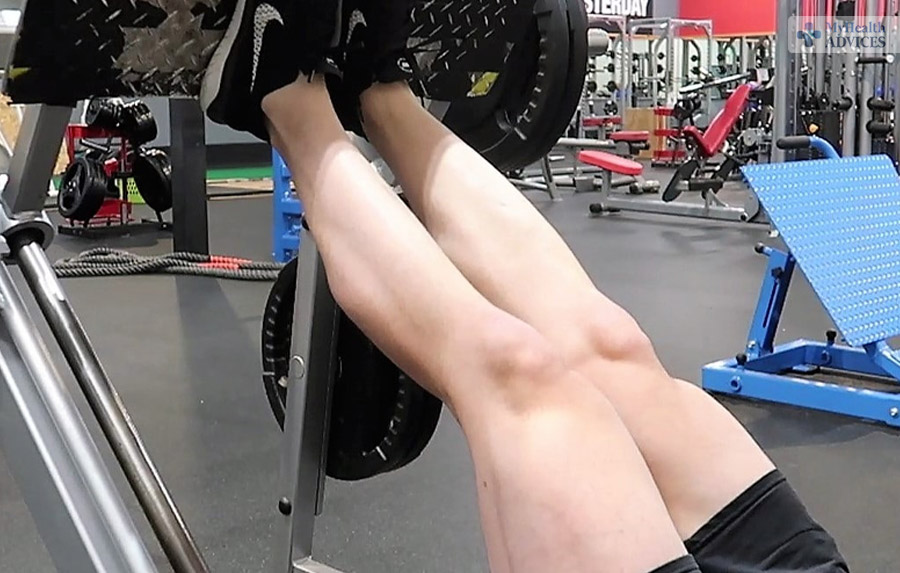With regards to strengthening the lower body and building strong leg muscles, the leg press foot placement exercise remains sturdy in any gym. Be that as it may, accomplishing ideal outcomes with the leg press requires something other than animal strength – it requires the calibration of your foot placement. Does any market-available leg press machine foot placement help you to do the exercise?
Whether you’re a carefully prepared lifter or new to the gym, understanding the subtleties of foot placement on the leg press is critical to opening your leg’s maximum capacity. In this extensive guide, we’ll dive into different foot placement variations on the leg press machine, looking at their effect on muscle engagement and in general adequacy.
The Leg Press Machine: A Quick Overview

Before we jump into the complexities of foot placement, we should start with a concise overview of the leg press machine. This considerable hardware allows you to perform compound leg exercises by pushing weight plates or a sled away from your body.
It basically focuses on the quadriceps, hamstrings, and glutes, making it a fundamental part of lower body workouts.
Why Foot Placement Matters?
Your foot placement on leg press machine can fundamentally affect your workout. It impacts the muscles you engage, the level of stress placed on your joints, and the general viability of the exercise. Therefore, understanding the different foot placement choices is urgent.
Leg Press Foot Placement Exercise Variations
We should investigate the most common foot placement variations for the leg press machine:
High Foot Placement: Placing your feet high on the footplate is frequently connected with focusing on the quadriceps more than other muscles. It requires more noteworthy lower leg adaptability and stresses the top piece of the leg press movement.
Low Foot Placement: Positioning your feet low on the footplate moves the concentration towards the hamstrings and glutes. This variation limits lower leg adaptability prerequisites and emphasizes the lower piece of the leg press movement.
Wide Foot Placement: Widening your stance can place extra accentuation on the inner thighs. This variation is frequently preferred by those hoping to foster the adductor muscles.
Narrow Foot Placement: A narrower foot placement normally engages the outer thighs and focuses on the abductor muscles. It’s an amazing choice for enhancing your leg press schedule.
Seated Leg Press Foot Placement
The seated leg press foot placement machine is another well-known variation that can offer interesting benefits. This is the way to move toward foot placement while utilizing this machine:
High Foot Placement: For the seated leg press, placing your feet high on the footplate can assist you with focusing on the quadriceps all the more straightforwardly. It’s pivotal to guarantee that your knees stay in accordance with your feet during the whole range of motion.
Low Foot Placement: Lower foot placement on the seated leg press engages the hamstrings and glutes, giving a fantastic choice to make your leg improve.
Wide and Narrow Stance: Similarly likewise with the standard leg press machine, you can try different things with a wide or narrow stance on the seated leg press to engage different leg muscles.
Foot Placement For Leg Press: A Step-By-Step Guide

Accomplishing the right foot placement on the leg press machine is imperative for a protected and viable workout. Follow these steps to guarantee you take care of business:
Step 1: Adjust the Seat: Start by adjusting the seat on the leg press foot placement machine to a position that allows your knees to twist at a 90-degree point when your feet are placed on the footplate.
Step 2: Choose Your Variation: Conclude which foot placement for leg press variation you might want to attempt – high, low, wide, or narrow. Make a point to start with a weight so that you can serenely figure out how to avoid stressing your muscles or joints.
Step 3: Position Your Feet: Place your feet shoulder-width separated or at your ideal width on the footplate. Guarantee your heels are level against the plate, and your toes are pointing somewhat outward.
Step 4: Safety Locks: Make sure that the safety locks are engaged, and you have a solid hold on the handles. This will assist with keeping up with steadiness during the exercise.
Step 5: Execute the Leg Press: Take a full breath, breathe out, and push the weight sled away from your body by broadening your legs. Keep up with control all through the movement.
Step 6: Return to the Starting Position: Inhale and slowly lower the weight sled back to the starting position, guaranteeing a full range of motion.
What Are The Advantages Of Foot Placement Variations?

Understanding and using different leg press foot placements can offer a few advantages:
| Targeted Muscle Engagement | You can explicitly target different leg muscles, like the quadriceps, hamstrings, glutes, and inner and outer thighs. |
| Versatility | Foot placement variations allow you to broaden your leg workout schedule, forestalling plateaus and upgrading muscle improvement |
| Joint Health | By adjusting your foot placement, you can lessen stress on unambiguous joints, limiting the risk of injury |
| Customization | You can fit your leg press workout to your wellness objectives, whether they include building muscle, expanding strength, or working on strong perseverance. |
| Progression | Exploring different avenues regarding foot placement can assist you with tracking down the best positioning for your one-of-a-kind body mechanics, prompting better advancement. |
Common Mistakes To Avoid
While leg press foot placement variations can be highly gainful, it’s essential to avoid common mistakes that can think twice about the workout:
- Improper Range of Motion: Neglecting to utilize the full range of motion can restrict the viability of the exercise. Ensure you drive the sled away until your legs are almost completely expanded and return until your knees are at a 90-degree point.
- Inadequate Warm-Up: Skirting a legitimate warm-up can prompt muscle strains and wounds. Guarantee your muscles are warmed up enough prior to handling the leg press machine.
- Excessive Weight: Overburdening the machine with a lot of weight can prompt unfortunate structure and expanded risk of injury. Start with a weight that you can deal with legitimate technique.
- Neglecting Safety Locks: Neglecting to engage the safety locks can bring about shaky and perilous movements. Continuously guarantee they are in place.
Conclusion

Accomplishing ideal outcomes on the leg press foot placement machine requires something other than beast force. Understanding the subtleties of foot placement can be a unique advantage for your lower body workout schedule. Whether you settle on high, low, wide, or narrow foot placement, the key is to adjust your decision to your wellness objectives and body mechanics.
Thus, the following time you step up to the leg press machine, think about the huge swath of foot placement variations available to you. Try to find what turns out best for you, and watch your leg muscles thrive. Keep in mind that the excursion to strong and distinct legs starts with the exact placement of your feet.
Also Read:
- How Good Or Bad Is Soya For Men’s Health?
- Why Do Exercise Needs Vary Between Individuals?
- Enfamil Or Similac: Which Formula Is Best For My Baby?


